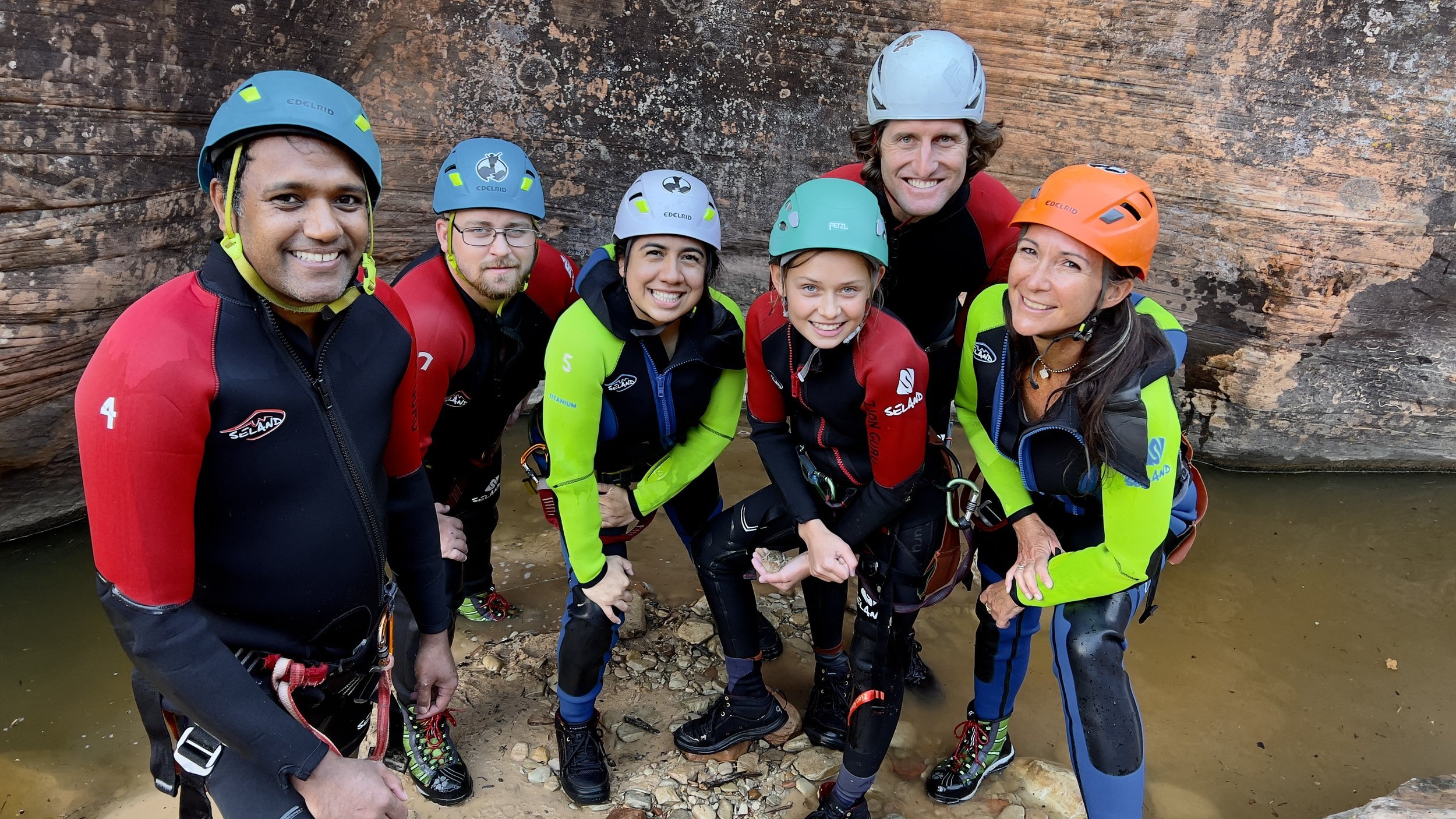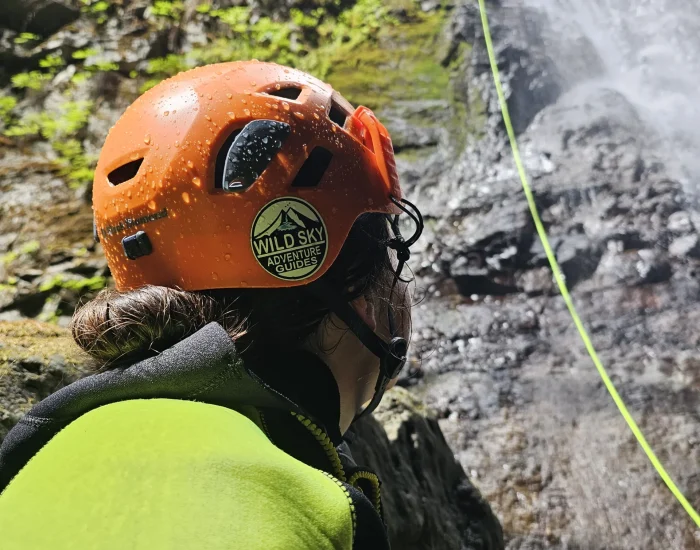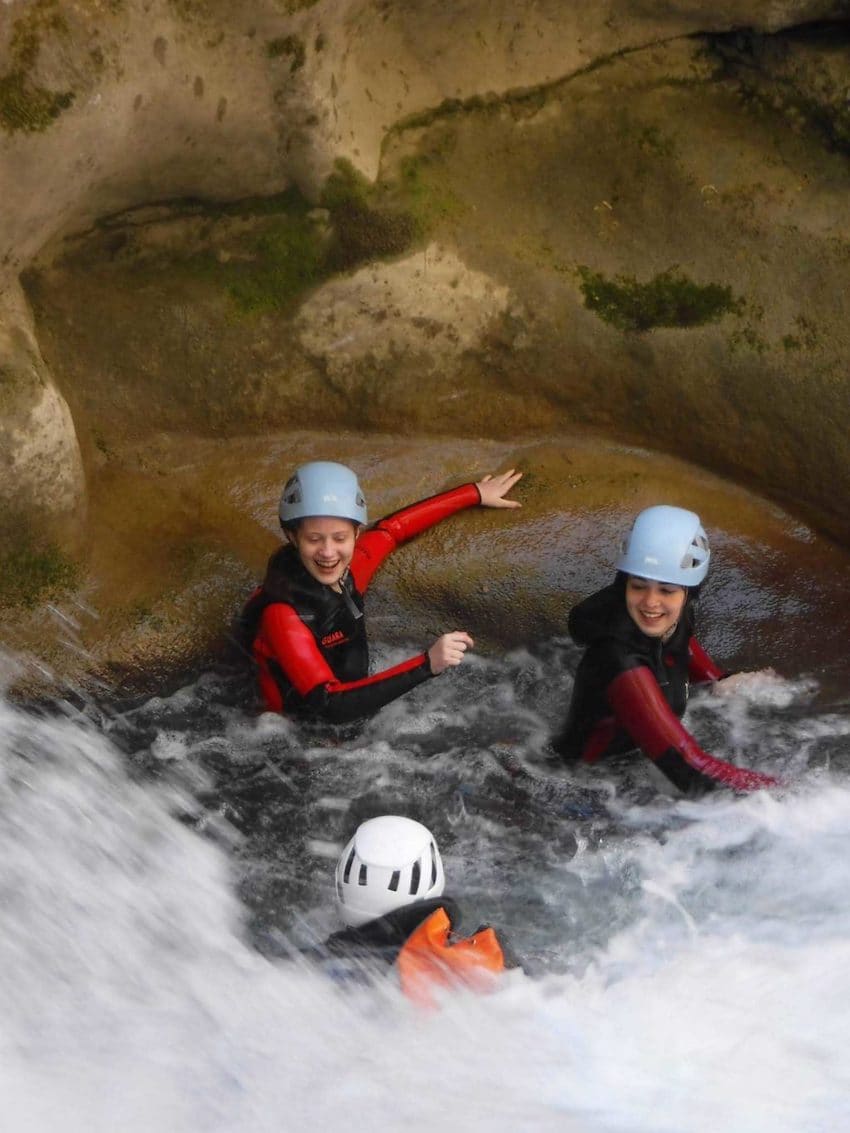A canyoning helmet is essential for protecting your head during water-involved rock navigation. These helmets are specifically designed to withstand impacts and abrasions common in canyoneering adventures.
Canyoning combines elements of rock climbing, rappelling, and swimming, making safety gear critical. Navigating through canyons, adventurers encounter slippery rocks, waterfalls, and sudden drops, which expose them to the risk of head injuries. A robust canyoning helmet provides the necessary protection against such hazards.
It should be comfortable, lightweight, and offer good ventilation to handle the humid conditions within canyons. Look for a helmet with an adjustable fit to ensure stability on your head, regardless of the rigors of the descent. With the right helmet, you can focus on the thrill of exploration while minimizing the risks involved in this challenging outdoor activity.
Introduction To Canyoning: The Thrill And Risks
Canyoning: The Thrill and Risks brings together the heart-pumping adventure of traversing rugged landscapes with the cautious tale of personal safety. It’s an activity that combines climbing, swimming, and jumping. Ensuring the right protection, like a canyoning helmet, is key to the game.
Understanding Canyoning: A Brief Overview
Canyoning is an adventure that takes you through river canyons and deep gorges. It involves several activities:
- Hiking through untouched trails
- Swimming in crystal-clear waters
- Abseiling down waterfalls
- Jumping into natural pools
The sport is thrilling but requires proper skills and equipment for safe enjoyment.
Assessing The Risks: Why Protection Matters
With canyoning, risks are part of the adventure. Challenging terrains and unpredictable waters demand respect. Safety gear is not just recommended; it’s essential. Here’s why:
- Prevents head injuries from falls or flying debris
- Secures your head against knocks on rocks during slips
- Essential for safety in swift water
A reliable canyoning helmet can literally be a lifesaver. Durable, comfortable, and with proper ventilation, it should be at the top of your gear list.
Anatomy Of A Canyoning Helmet: Features To Look For
When preparing for the thrilling adventure of canyoning, choosing the right helmet is vital. A canyoning helmet protects against impacts, falling rocks, and helps in water navigation. Yet not all helmets are equal. To choose the best, understanding the helmet’s anatomy is crucial. Let’s dive into what to look for in a canyoning helmet.
Material Matters: Construction And Durability
The helmet’s material directly affects durability and protection. Most are made from high-quality plastics like ABS or polycarbonate. These provide a tough, yet lightweight, shell. Some feature a hybrid design with harder shells and softer foam interiors. Look for materials that resist wear, tear, and UV radiation.
- ABS plastic: Strong impact resistance.
- Polycarbonate: Lightweight with high durability.
- Foam lining: Adds comfort and shock absorption.
Design Details: Ventilation, Drainage, And Fit
Finding a helmet with good ventilation and drainage is essential. A well-designed helmet keeps you cool and drains water swiftly.
| Feature | Benefit |
|---|---|
| Ventilation Holes | Promotes air flow, reduces overheating |
| Drainage System | Prevents water buildup, enhances comfort |
| Adjustable Straps | Ensures a secure, snug fit |
Additionally, ensuring a proper fit is critical for safety and comfort. Helmets often come with adjustable straps and padding to customize the fit. Make sure the helmet does not slide or shift while wearing it.
Certified Safety: Understanding Standards And Testing
Safety certifications indicate that a helmet meets established standards. Look for certifications like EN, UIAA, or ASTM. These reflect rigorous testing and safety measures.
- EN standards: European testing for impact protection.
- UIAA standards: Globally recognized mountaineering certifications.
- ASTM standards: American testing for various safety aspects.
Ensure the helmet has undergone and passed these tests. This provides peace of mind that the helmet stands up to the extreme conditions of canyoning.
Selecting The Right Canyoning Helmet
A canyoning helmet is your best friend in rocky, wet terrain.
It protects your head from falls and flying debris. You need the perfect helmet
for safety and comfort. Let’s walk through choosing the best canyoning helmet.
Size And Comfort: Ensuring A Proper Fit
Comfort is key because the right helmet should feel like it’s barely there.
Here’s how to ensure the proper fit for your canyoning adventure:
- Measure your head just above your eyebrows to get your size.
- Check the padding inside the helmet. It should feel snug, not tight.
- Adjust the straps and buckles for a secure fit.
- Nod and shake your head. Your helmet should stay put without wobbling.
Style Vs. Function: What’s More Important?
Function beats style in the world of canyoning. Think about these factors:
| Function | Style |
|---|---|
| Durability Impact resistance Water drainage | Colors Shapes Graphics |
Prioritize protection over looks when choosing your helmet.
The Price Of Safety: Budgeting For Quality
Price tags vary, but quality should never be compromised. Consider this:
- A higher price often means better materials and more features.
- Look for certifications that guarantee helmet safety standards.
- Investing in a durable helmet can save money in the long run.
Balance your budget with the need for a helmet that keeps you safe.

Credit: www.zionguru.com
Helmet Maintenance And Care
Your canyoning helmet is your best friend when it comes to safety on your thrilling adventures. Just like any good friend, it needs care and attention to perform its best. Maintaining your helmet is not only about keeping it clean but also ensuring it will protect you when you need it most. Follow these tips to keep your helmet adventure-ready, inspect it correctly, and store it properly to extend its life.
Routine Cleaning: Keeping Your Helmet Adventure-ready
Regular cleaning prevents build-up of grime and ensures your helmet is always ready for action. It’s simple to do:
- Remove any liners or padding and wash them separately.
- Rinse the helmet shell with mild soap and cool water.
- Use a soft cloth to avoid scratching the surface.
- Let everything air dry before reassembling.
Inspection And Replacement: When To Say Goodbye
To stay safe, inspect your helmet before and after each use:
- Check for cracks, dents, or any damage.
- Ensure the straps and buckles work flawlessly.
- Look for signs of wear on the inner lining.
If you find damage, it’s time for a new helmet. As a rule, replace your helmet every 3 to 5 years, even if it looks fine.
Storage Tips: Prolonging The Life Of Your Canyoning Gear
Proper storage is key to a long-lasting helmet:
| Do’s | Don’ts |
|---|---|
| Store in a cool, dry place. | Don’t leave it in direct sunlight. |
| Hang it on a helmet rack. | Avoid placing heavy objects on top. |
| Keep it away from chemicals. | Don’t store it when wet. |
By cleaning, inspecting, and storing your helmet properly, you ensure your gear will be ready for your next canyoning quest. Treat your helmet well, and it will take care of you in return.
Advanced Helmet Features For Seasoned Canyoners
For the daring canyoneer, advancing through rugged terrain demands gear that offers superior safety and functionality. Modern canyoning helmets bring forth features designed to tackle challenging environments adeptly. Sophisticated solutions are at the forefront for those who live to explore the depths and heights of canyons. Let’s delve into the advanced helmet features that cater specifically to seasoned canyoners.
Enhanced Protection: Visors, Ear Guards, And Padding
Safety comes first in any extreme sport, and canyoning is no exception. Innovations in helmet design focus on comprehensive head protection.
- Visors shield the eyes from the glare of the sun and protect against flying debris.
- Ear guards defend against impacts and help maintain balance by protecting the inner ear.
- Padding adds an extra comfort layer, ensuring a snug fit and cushioning against shocks.
Together, these features work to keep canyoners secure and focused during their adventurous descents.
Communication Integration: Preparing For Group Expeditions
Teamwork is crucial in complex canyon landscapes. A helmet equipped with communication integration allows for seamless group coordination. Here’s how:
- Built-in radio connectors enable easy conversations between team members.
- Bluetooth setups allow for wireless communication, free from cumbersome cables.
- Hands-free operation ensures communication does not compromise maneuverability.
These systems ensure that teams stay connected and informed, effectively enhancing group safety and dynamics.
Customizations And Add-ons: Personalizing Your Helmet
Personalizing your helmet not only reflects individual style but also ensures the gear meets specific needs. Let’s explore the possibilities:
- Adjustable venting systems to regulate temperature and airflow.
- Mounts for cameras or lights, perfect for those who document their expeditions or navigate low-light canyons.
- Interchangeable pads for varying head shapes and sizes.
These customizable options ensure that your helmet is a true extension of your adventurous spirit and utility.

Credit: wildskyguides.com
Embarking On A Safe Canyoning Journey
Ensuring safety becomes paramount when conquering rugged terrains and embracing the thrills of canyoning. A helmet stands as the guardian of adventurers, promising enhanced protection during those daring descents. The balance between excitement and safety is crucial. Staying informed on canyoning safety practices is equally important. Let’s delve into how a helmet, prudence, and ongoing learning contribute to a secure canyoning experience.
The Role Of A Helmet In Overall Safety
A canyoning helmet shields your head from injuries. It absorbs impact from falling rocks or bumps against canyon walls. Look for helmets with these features:
- Durable material that withstands harsh conditions
- Proper fit to ensure it stays on during swift movements
- Adequate ventilation for comfort in different climates
Balancing Adventure With Prudence
Embarking on a canyoning adventure should always be paired with a cautious approach. Always wear your helmet. Regularly check your gear before you head out. Assess the canyon’s difficulty and know your limits. Follow these guidelines for a balanced adventure:
- Prepare with the right equipment and ensure it’s in good condition
- Stay within your skill level to avoid unnecessary risk
- Travel with experienced companions or guides
Continuing Education: Staying Updated On Canyoning Safety
To keep safety a top priority, commit to ongoing education. Canyoning techniques and safety measures evolve. Stay informed with these steps:
- Attend regular safety workshops or courses
- Read the latest research and guidelines from canyoning authorities
- Practice new techniques in controlled environments

Credit: verdonsecret.com
Frequently Asked Questions On Canyoning Helmet
What Is A Canyoning Helmet?
A canyoning helmet is protective headgear specifically designed for the sport of canyoning. It safeguards against impacts from rocks, waterfalls, and collisions, ensuring safety throughout the adventure.
Is A Bike Helmet Suitable For Canyoning?
No, a bike helmet is not suitable for canyoning. Canyoning helmets are specially engineered to resist multiple hazards including water immersion, abrasion, and blunt force impacts encountered in canyon environments.
How To Choose The Right Canyoning Helmet?
Selecting the right canyoning helmet involves checking for proper fit, comfort, ventilation, and materials that comply with safety standards specific to aquatic and rock environments typical in canyoning.
What Safety Certifications Should Canyoning Helmets Meet?
Canyoning helmets should meet safety certifications like the CE EN 12492 standard. This certifies that the helmet is tested for shock absorption, penetration resistance, and retention system effectiveness in mountainous terrains.
Related Post:
Conclusion
Selecting the right canyoning helmet is crucial for both safety and comfort. Embrace your next adventure with confidence by investing in a helmet that meets all your needs. Remember, a well-fitted and durable helmet can be the difference between a good and a great outdoor experience.
Gear up responsibly, and happy canyoning!

Steven is a professional cyclist and his passion is cycling. He has been cycling for the last 6 years and he loves using bikes while outing as well. Based on his experiences with the different types of bikes; he is sharing his opinions about various bikes so that a beginner can start right away. Find him on Twitter @thecyclistguy Happy Biking.


Leave a Reply